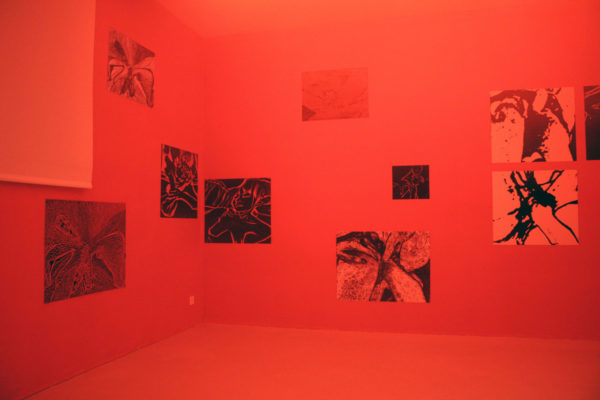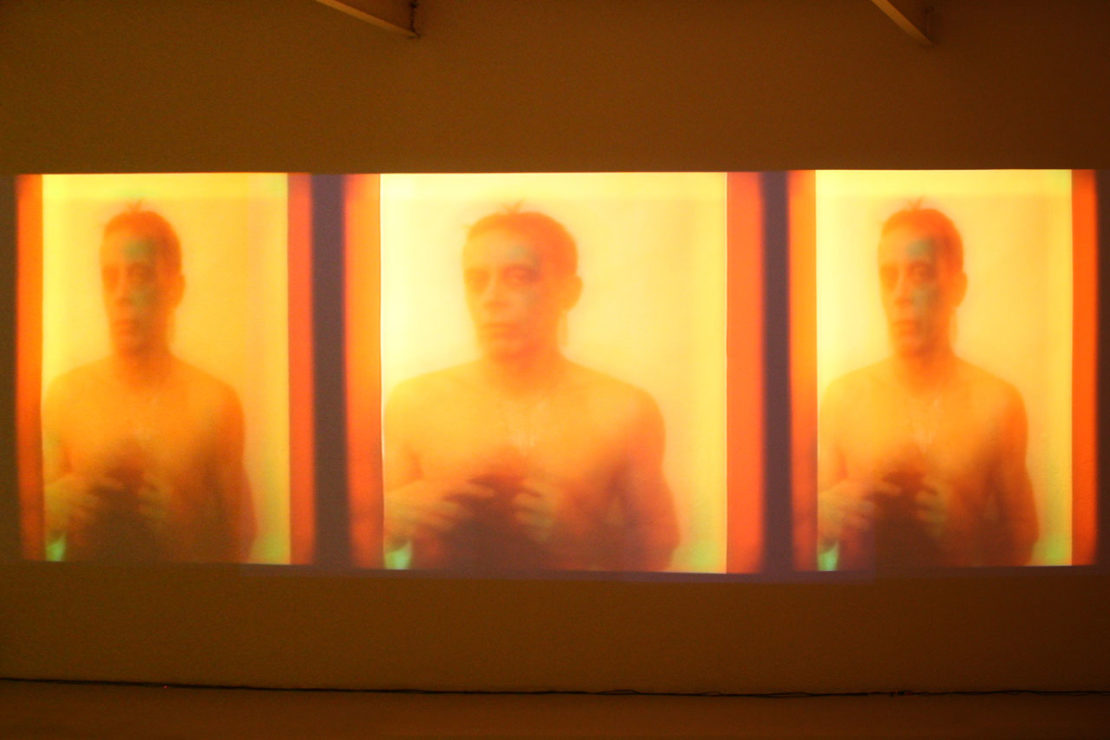Hermaphrodite and the Philosophy of Transit: or Sexuality abdicated.
Massimo Vitangeli
2 October – 7 November 2010
For Friedrich Nietzsche, as for many others both before and after him, the mythology that surrounds Dionysus offered an important stimulus to the thinking intrinsic to his oeuvre. The figure of this Greek god – both sacred and at the same time sacrilegious, an ageless apostle, modern and secular, exposing and irrational – crops up periodically to remind us that mankind’s universal stories prevail over history. The topic, which Massimo Vitangeli (1950) tackles with a site-specific work for his first solo exhibition at the CACT Centre of Contemporary Art in Canton Ticino, revives some elements of Dionysus, drawing on eroticism to conduct a profound analysis of the phenomenon of hermaphroditism in a society – today’s society – that tends towards the transmedia, unisex, post-contemporary and post-technological, yet where the imposition of roles still remains one of the fundamental dogmas of its bourgeois matrix. Vitangeli tells us that “the exhibition develops around the concept of connection between (sexual) identity and social role, where the transgender philosophy and the interchangeability between male and female ‘echo’. This is a philosophy of transition, of transformation, of relations, of flux… that refutes definitive syntheses and favours the development of the future”. By reviving such concepts as mobility, transition and the juxtaposition between being and not being expressed by philosophers from Heraclitus to Heidegger, Vitangeli compares man’s being and uniqueness with the Dionysiac possibility of venturing on a journey between rationality and passion, characteristics traceable to the male gender (the former) and to the female (the latter). Official philosophy’s acceptance of the human being’s central importance and of the affirmation of our countless peculiarities, together with Nietzsche’s warnings about the spectre of the numerous truths that go with it, certainly anticipated the future of a spineless, homogenised society, propped up by dogmas and a scarce propensity to pragmatism. Thus does the figure of Dionysus – so dear to the German philosopher – burst onto today’s scene once more, like a daguerreotype of contemporary man. The third gender – the hermaphrodite – has long been recognised by a country like India, establishing a clear third social identity. In a society that imposes both the principle of the role and the decision of which role to play, the fact that some people have elements of both genders causes all sorts of problems for many countries when the time comes for them to legislate. Going back to the phenomenon’s sociological relevance, the figure of the hermaphrodite as the pinnacle of a ‘different’ truth could generally constitute a further fundamental element to mirror a post-contemporary society, leading to an identity being taken on, rather than represented. The works on show, which are nearly all installations, use the language of art to tackle all these questions. Perceptions are one of the elements through which Vitangeli sets out to observe and see us. Gender-Bending (2010) is a synchronised video triptych. Citing Bergson, who says “there’s more reality and creativity in perception and imagery than in concept and intellect”, the artist establishes an obsessive relationship with his own identity. Obsessive and frenetic are also suitable adjectives for describing his use of the medium of video. The image is not a narrative representation of being: what is narrative is the soundtrack, a series of short spoken phrases that persuade us to ask questions about the certainty of the ego and of our identity. The installation Liquid Body (2010) develops on the theme of freedom in the relationship between the individual and the group. A video is projected into a silk banner that moves in the wind. There is humour and subtlety here in the metaphor about the weightiness and indoctrination that political and social mores exert on individuals’ roles and identities: in its use of materials, this work jibes humorously at the media channels that are tied hand and foot to modern propaganda and to nationalism. What Vitangeli has created here is a piece that talks to us about desire, addressing a culture – our contemporary culture – that focuses on instantly consuming both things and people. One room hosts the marble sculpture entitled Power Is Not Power (2010), which develops the theme of sexuality and its diversities, focusing in particular on the topic of individual truth and how it relates to the ways in which we experience our body sexually. Thrust into the floor, a little like the ostrich that sticks its head into the sand to avoid seeing and so knowing about what is going on around it, this work talks to us about revelation as the desire to know and about our conscious and unconscious responsibilities. The series of 19 works entitled In Cold Blood (2008-2010) is a corpus produced by Massimo Vitangeli by observing and collecting pornographic images. (Re)drawn at the computer and produced as photographic prints, they hang at random and in a variety of formats in a room with a red-light theme (the walls and the illumination). The approach used here is one of re-elaboration, so that observers are encouraged to define themselves in terms of their perception of eroticism and their desire to look at it. The component of voyeurism is of crucial importance to the process of observing the collective and subjective imagery. “If we do not know what a thing is, it nevertheless enriches our knowledge to know what it is not” (Carl Gustav Jung, Aion: Researches into the Phenomenology of the Self, 1951). Vitangeli has worked on this postulate to produce The Events Horizon (2010), the last piece that completes the mosaic of this exhibition, whose meanings are expressed in an artistic language linked coherently to the topics under discussion, concluding with questions and interrogatives that he frames for us, his visitors, to consider in relation to our own desire to be. Mario Casanova, 2010 (translation Pete Kercher)
Ph. Pier Giorgio De Pinto © PRO LITTERIS Zürich.
Where
MACT/CACT
Museo e Centro d’Arte Contemporanea Ticino
Via Tamaro 3, Bellinzona.
Opening hours
Friday, Saturday, Sunday
2 p.m. – 6 p.m.



